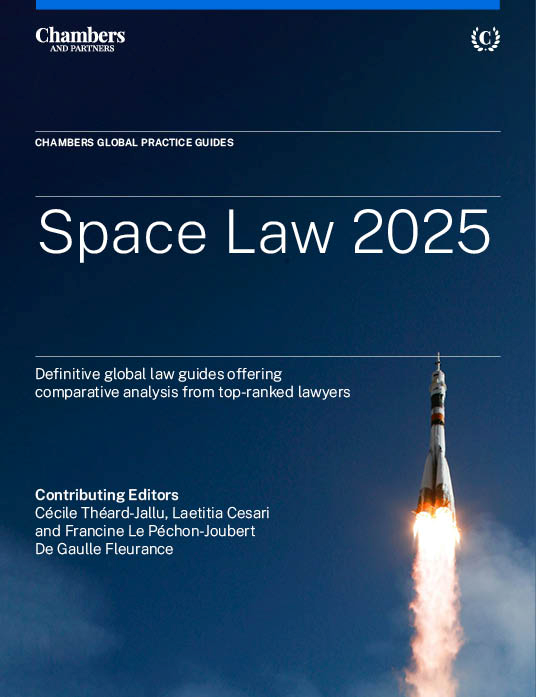
Space Law 2025
The new Space Law 2025 guide features a dozen key jurisdictions. The guide provides the latest legal information on global trends in the space economy, the legal and regulatory framework for space exploration and industry, data protection and cybersecurity in space, environmental protections in space, the tax and investment environment for space, and IP matters and dispute resolution as these apply to the space sector.
Last Updated: July 10, 2025
Compare law and practice by selecting locations and topic(s)
Select Locations

Select Topic(s)

Please select at least one location and one topic to use the compare functionality.
Introduction
In recent years, space has rapidly evolved from a domain reserved for a few pioneering states into a dynamic and contested environment of economic, technological, and geopolitical significance. This transformation brings with it a host of regulatory, ethical, and strategic challenges that legal frameworks around the world are only beginning to address.
The Chambers and Partners Space Law 2025 Guide captures this global shift, offering a cross-jurisdictional perspective on how law is adapting to the new realities of space activities – from satellite constellations and launch services to space data, cybersecurity, and orbital sustainability.
Across the jurisdictions featured in this guide, several key themes emerge. The first, among others, is the increasing need for legal certainty and international co-ordination as commercial actors enter a field traditionally dominated by public institutions. The rise of “NewSpace” players, offering everything from micro-launch capabilities to space-as-a-service platforms, demands flexible yet robust legal tools that reconcile innovation with responsibility.
Second, sustainability is no longer a rhetorical concern but a central legal obligation. As orbital traffic intensifies and space debris accumulates, regulators are moving towards enforceable norms for debris mitigation, end-of-life procedures, and responsible behaviour in orbit. These norms are often implemented at the national level but must align with evolving international principles.
Third, space law is becoming deeply intertwined with cybersecurity, data protection, and dual-use technology regulation. The increasing reliance on space-based infrastructure for essential services – communication, navigation, climate monitoring, and defence – makes the legal framework for space operations inseparable from broader legal regimes governing critical infrastructure and digital sovereignty.
This guide also reflects growing tensions between sovereignty and global governance. Jurisdictions are exploring how to assert control over space assets and data, while still participating in multilateral discussions on natural resource exploitation, space traffic management, and norms of peaceful use. The need for strategic autonomy is balanced against the imperative for co-operation in an inherently transboundary domain.
Each chapter offers a unique insight into how countries are responding to these challenges – whether by adapting existing airspace and telecommunications law, creating bespoke licensing regimes for space operators, or participating in international forums shaping the future legal order. The Trends and Developments articles, in particular, highlight the evolution of national policies and the emergence of new legal thinking in response to rapid technological advances.
While some states, including the USA, Canada, and several EU and Asian countries, have well-established legal frameworks for space activities, others are new entrants with dynamic strategies and comprehensive legal, industrial, and investment support programmes.
Some states actively participate in multilateral discussions aimed at developing international legal instruments for space activities. Others, or even the same states concurrently, are working towards regional legal frameworks, as exemplified by the EU’s proposed EU Space Law.
As clients and stakeholders increasingly look to space not just as a frontier, but as a domain for sustainable investment, this guide aims to provide both clarity and foresight. Legal systems may not be moving at the speed of innovation, but they are beginning to reflect the complexity and ambition of today’s space activities.
We extend our sincere gratitude to all contributors for their insightful perspectives and to Chambers and Partners for their continued trust and editorial co-ordination in bringing this guide to life.



